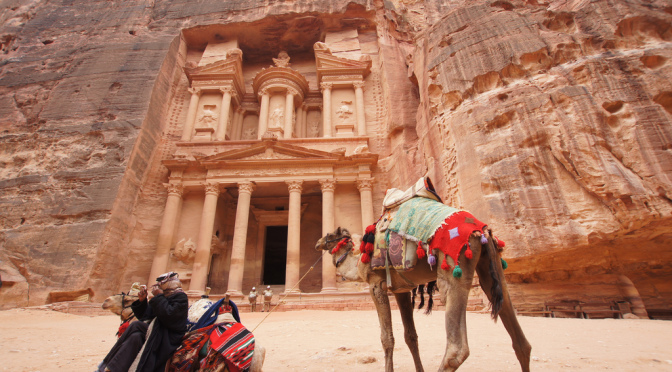Even if you have never heard of Petra, you have probably seen images of it. The ancient city’s so-called Treasury is arguably best known for its appearance in Indiana Jones and the Last Crusade. If you use Pinterest, you’ve no doubt seen pictures of it – and maybe wondered if it was too amazing to be true.
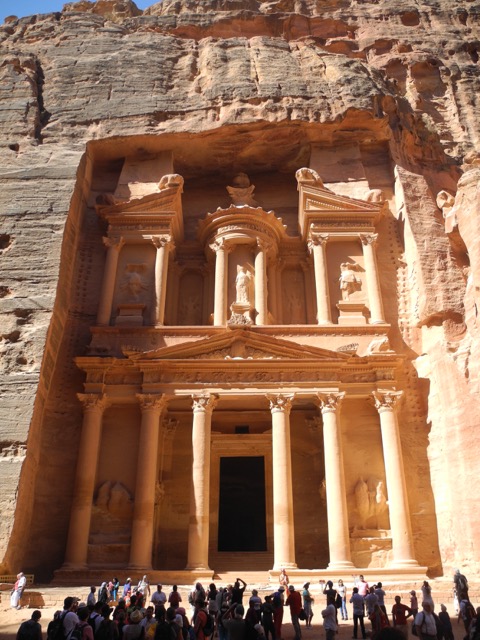
Let me remove any doubt: Petra is real and it is spectacular. The Treasury is the obvious crowd favorite, but there is so much more to Petra. An UNESCO World Heritage Site, Petra is roughly 100 square miles in size and full of incredible rock-hewn facades, temples, and amazing viewpoints.
We tackled Petra over the span of two days, and I highly recommend a similar course of action. While our two-day itinerary was necessary because we were worn out from our incredible trip to Wadi Rum, we were glad that we did not try to cram everything into one day. Having the time to hike Petra’s numerous trails and linger over sites made for an unforgettable couple of days.
Before I commence gushing about Petra, let me give you the bad news: It’s crowded. Perhaps we had been spoiled by our time in Egypt, where we were sometimes literally the only people around, but it was a challenge to not get annoyed with the hordes of people pouring through the site. Petra is a beautiful, mysterious place, and shouting tourists can ruin the atmosphere. Of course, like I said, Petra is a big place, and most of the crowds throng around the Treasury and then quickly thin out – so they are not completely unmanageable.
Here’s the other thing: along with the crowds come the animal handlers hawking rides on their particular beasts. Petra has a fairly complex system of animal assistance: horses from the ticket gate to the start of the Siq, horse-drawn carriages from the start of the Siq to the Treasury, camels from the Treasury to the start of the trail leading to the Monastery, and donkeys up to the Monastery.
I am of two minds on this topic. On the one hand, I think it’s great that the site is made accessible to people who would not otherwise be able to walk the long distances or climb the path to the Monastery. On the other hand, the animal handlers are a nuisance. They (mostly) are aggressive, race their animals along the paths without regard to pedestrians, and (often) do not pick up the waste left behind by their animals. If any one thing significantly detracted from our time at Petra, it was the animal handlers.
But, whatever, I still loved Petra. End rant.
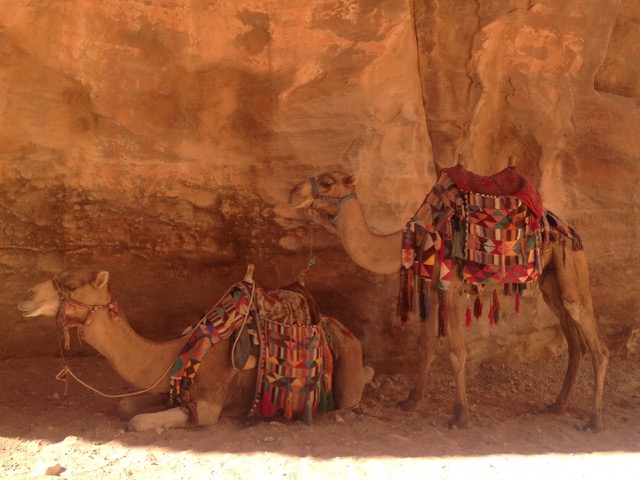
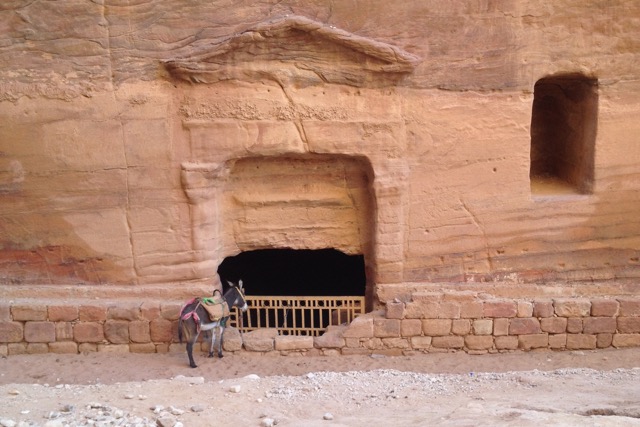
From the ticket office, there is a dusty path of a not insignificant distance (although the distance seemed to vary depending on how tired I felt and how hot the sun was) to the start of the Siq, the nearly mile-long natural gorge that serves as the entrance to Petra. Along the way, keep your eyes open for the Djinn Blocks (ancient funerary monuments) and the Obelisk Temple.1
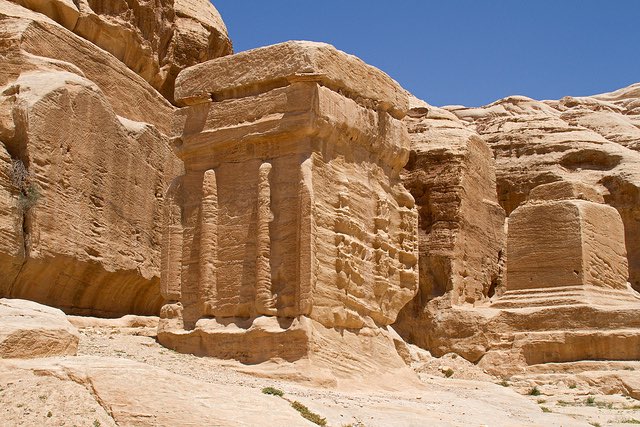
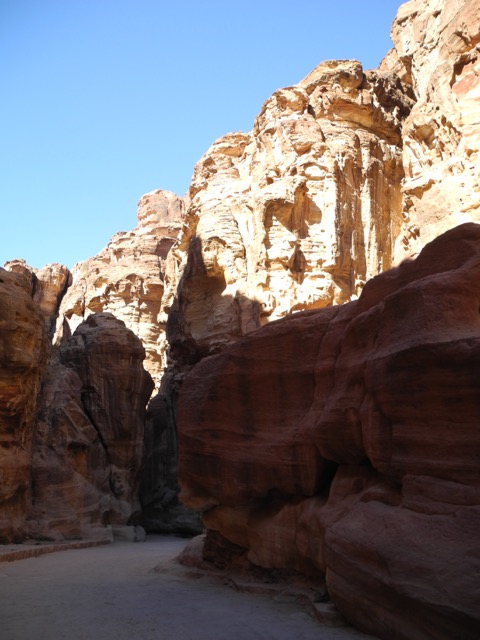
The Siq varies in width, sometimes narrowing to three meters wide.2 Provided you are not stuck in a crowd of tourists testing the echo capacities of the canyon or run down by one of the maniacal horse-drawn carriage drivers, the Siq is an entrancing introduction to Petra.
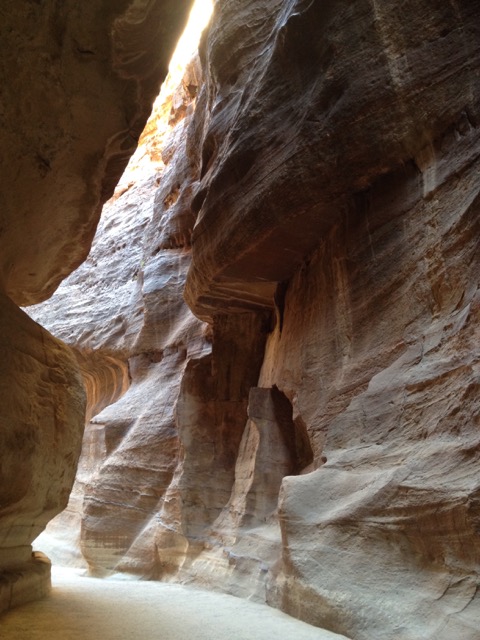
As the Siq draws to an end, you can catch your first glimpse of the Treasury. Your spine will tingle the first time you catch sight of that carved edifice, I promise.
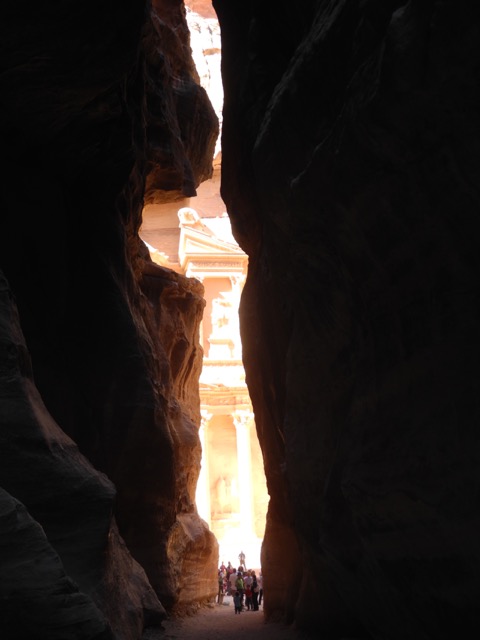
The Treasury is not actually a treasury. Its intended function is uncertain, but is thought to be a tomb or temple. Its moniker originates from an ancient myth that riches had been stashed in the stone urn at the top. The urn sustained bullet damage from people trying to shoot the treasure free – their attempts, of course, futile as the urn is carved from solid sandstone like the rest of the facade.
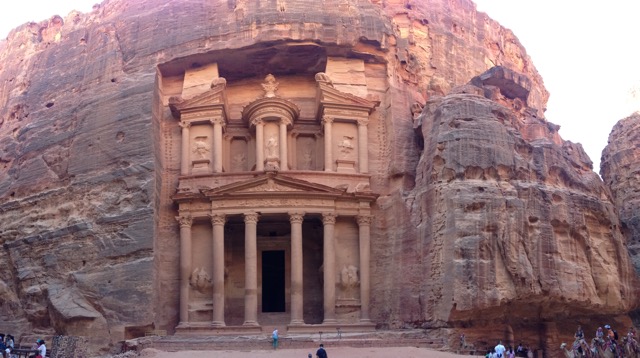
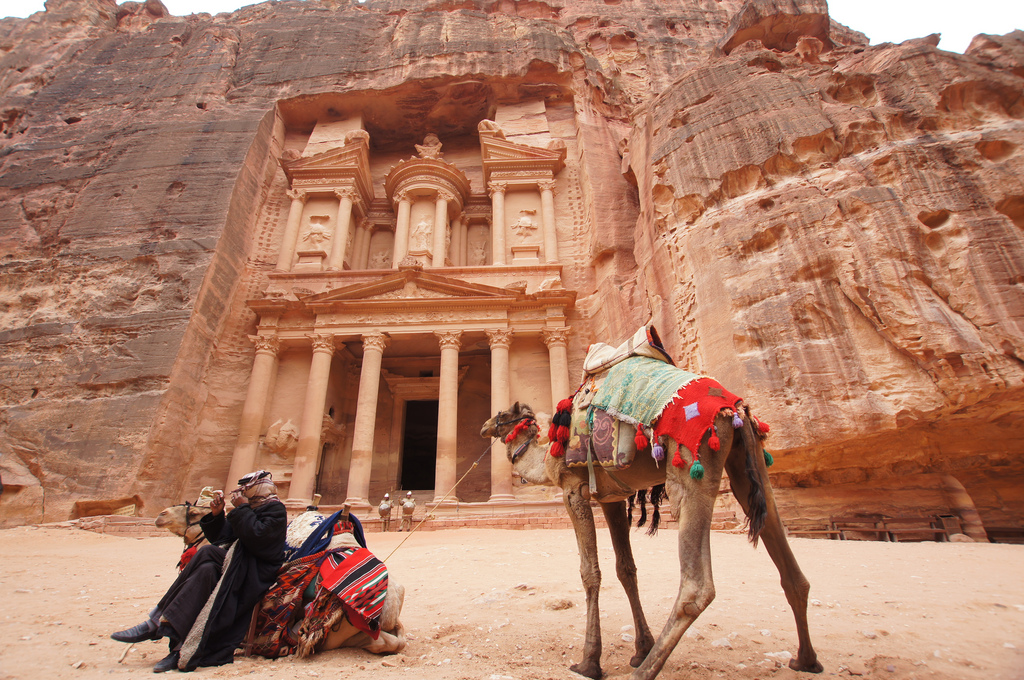
Our guidebook (which was only a couple of years old) was written in a manner which implied that a person could enter the Treasury, but the entrance was firmly barricaded. This didn’t bother us: by all accounts (and from what we could see), the interior is plain and unremarkable.
From the Treasury, we followed the path along the Street of Facades. The tombs flanking this route are carved directly into the sandstone, like the Treasury, but are notably less ornate.
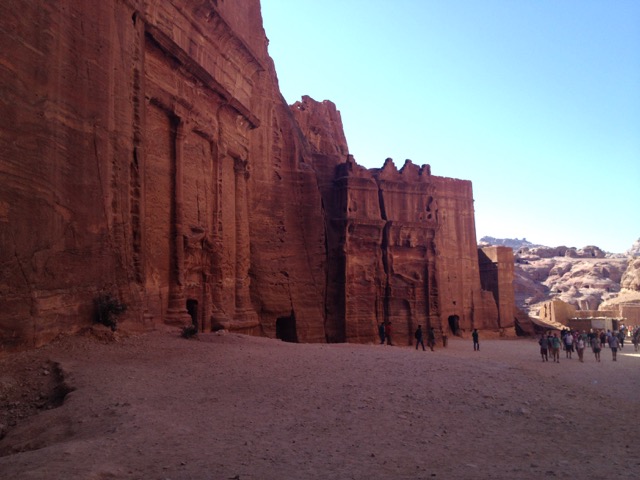
The Street of Facades widened onto a more open area surrounded by tombs of all kinds.
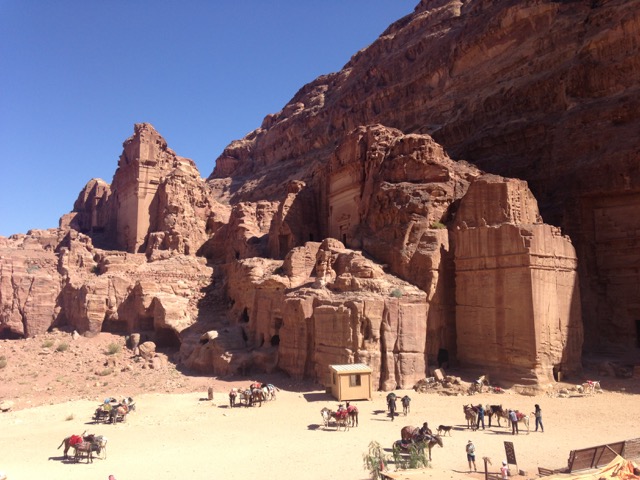
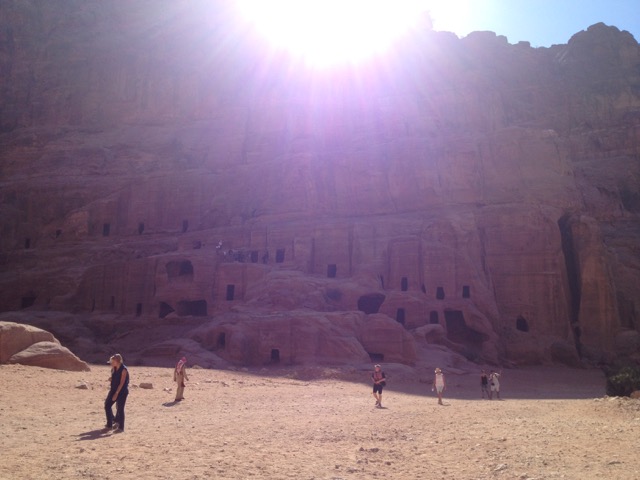
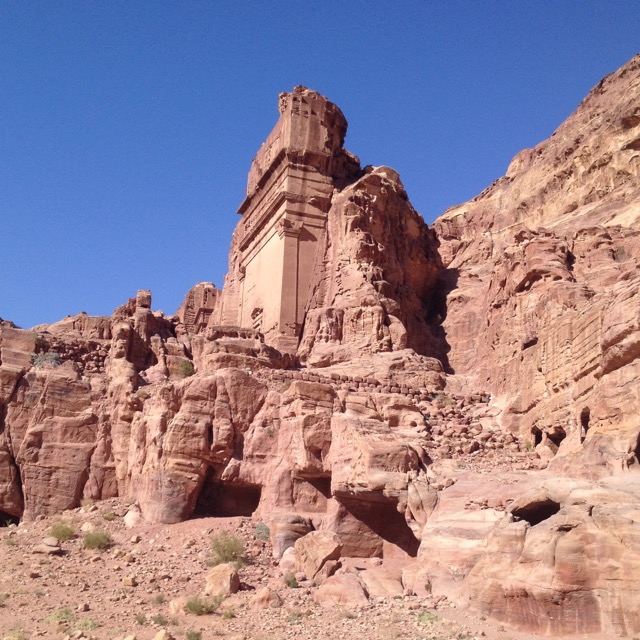
Here, you have the option to hike up to the High Place of Sacrifice or continue along the main path to hit Petra’s other major highlights. Because we were tired, we decided to save hiking for another day and continued along the main path.
The Theater is one of the first things along this path. Dating to the first century AD, the Theater could accommodate as many as 8,500 people. Toward the back, you can see tombs that had been revealed by carving into the wall for the Theater.
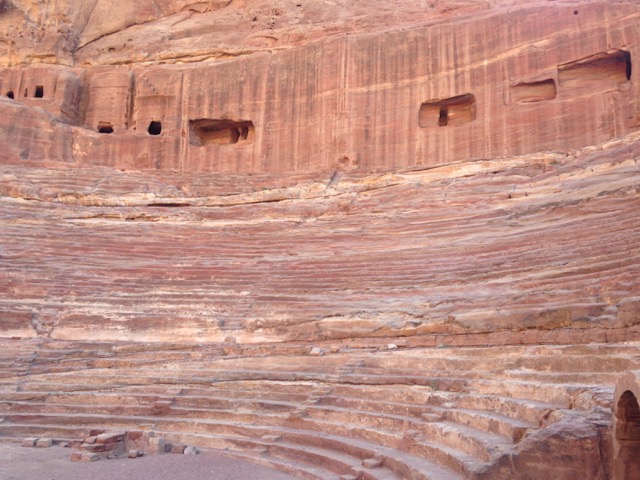
After we had checked out the Theater and chatted with the girls we had shared a taxi from Wadi Rum with (whom we had randomly run into), we decided to call it a day.
We returned in the morning, much brighter, more bushy-tailed, and much more eager to tackle the rest of Petra.
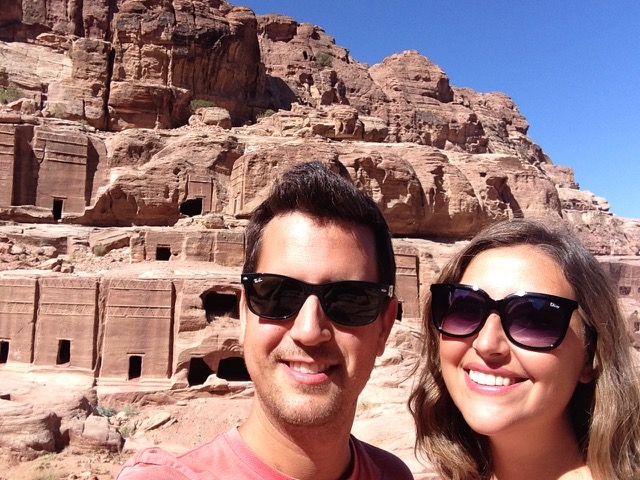
We headed straight for the beginning of the path to the High Place of Sacrifice and began our hike, stopping plenty of times to take in the incredible view.
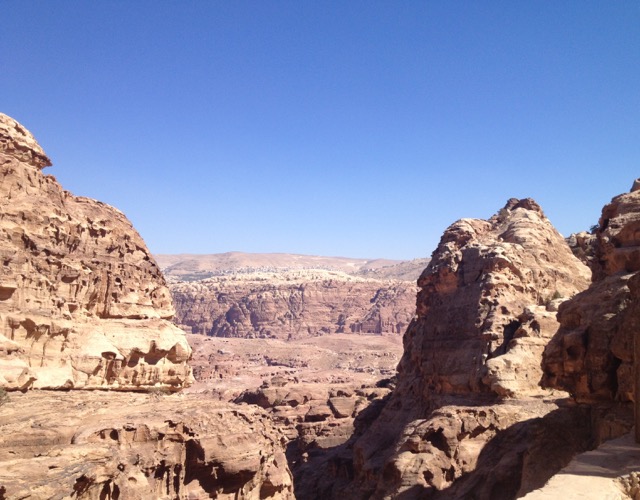
The High Place of Sacrifice is exactly what it sounds like: a sacrificial altar located at a very high place.
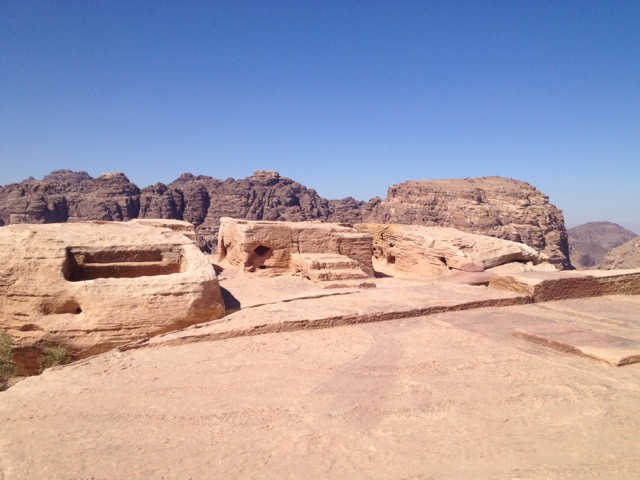
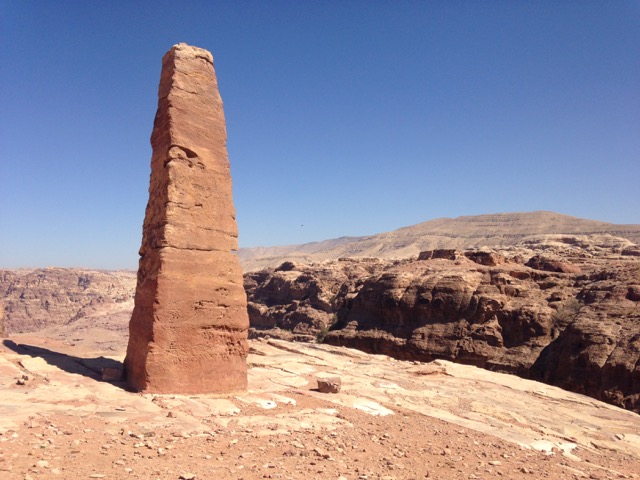
Once we reached the top, we took a break and enjoyed the spectacular view.

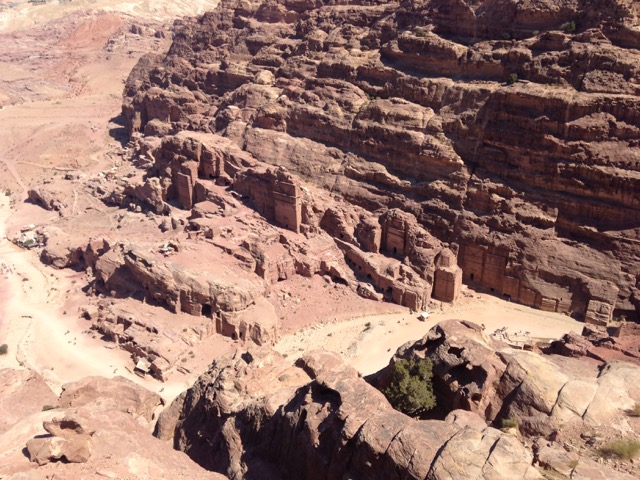
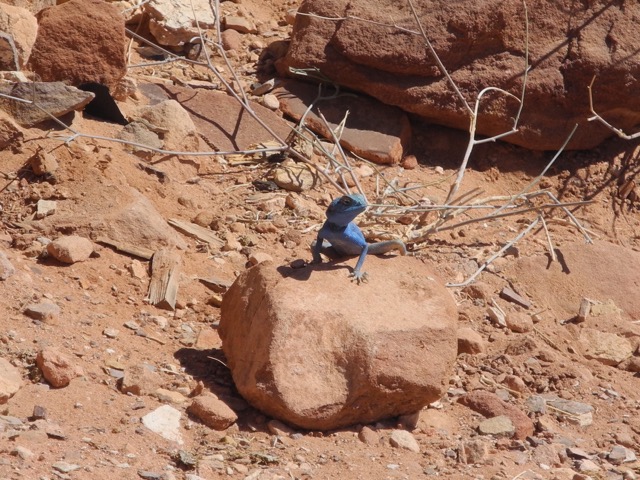
Rather than hiking down the same way that we had come up, we decided to descend from the High Place of Sacrifice along a back path. This might have been the best decision that we made all day. Not only did the path have far fewer visitors on it (affording us the peace and quiet that we had been missing), we saw a bunch of really cool things that we otherwise have missed, like the Lion Fountain, the Garden Tomb, the Colored Triclinium,3 and the Tomb of the Roman Soldier (so-named because of the statue of the solider above its door).
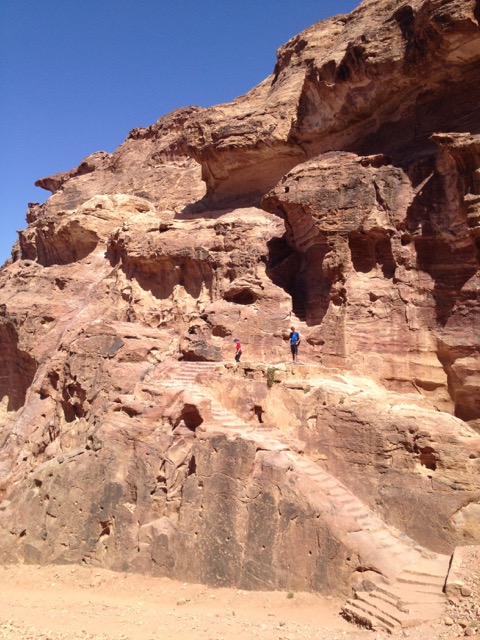
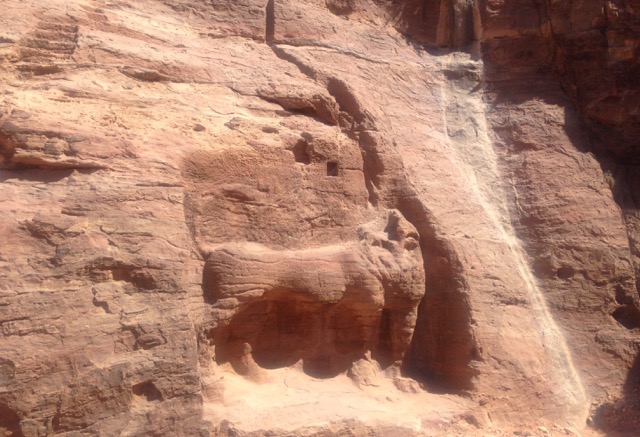
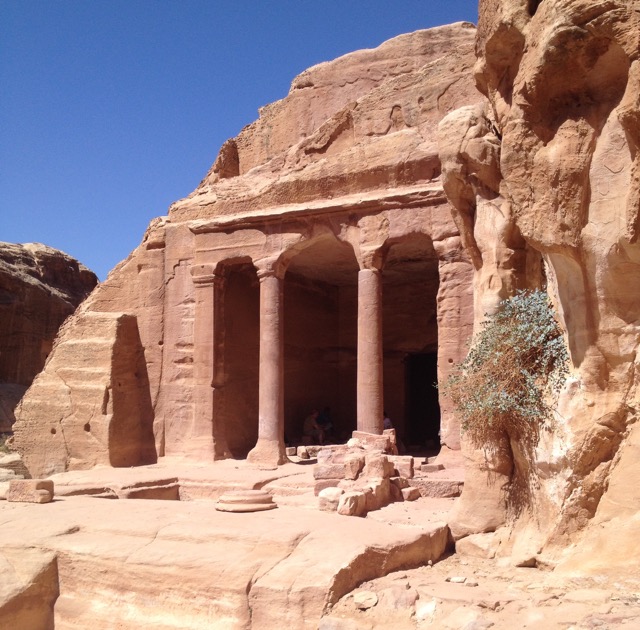
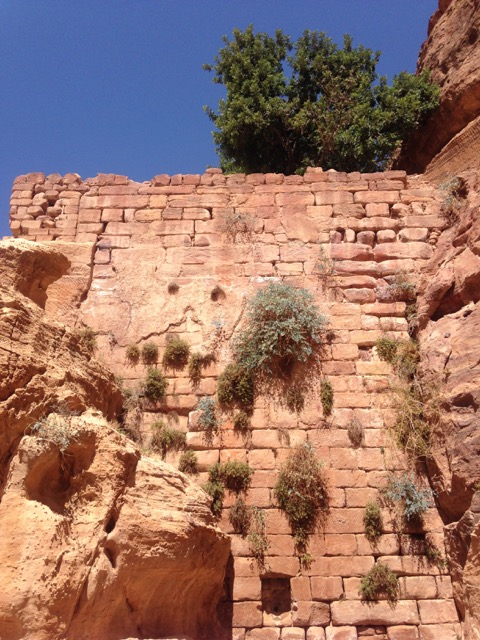
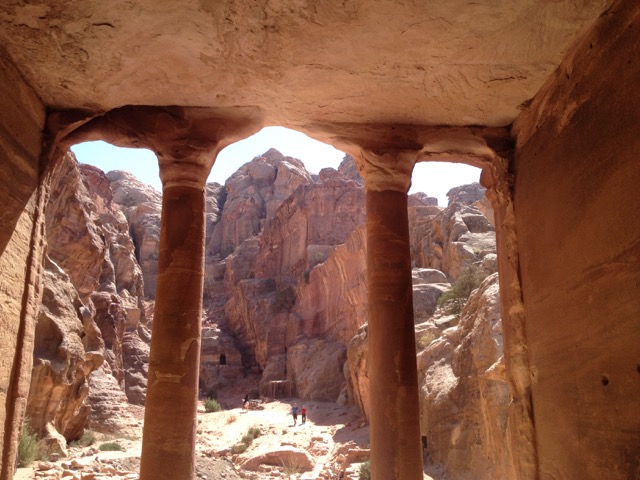
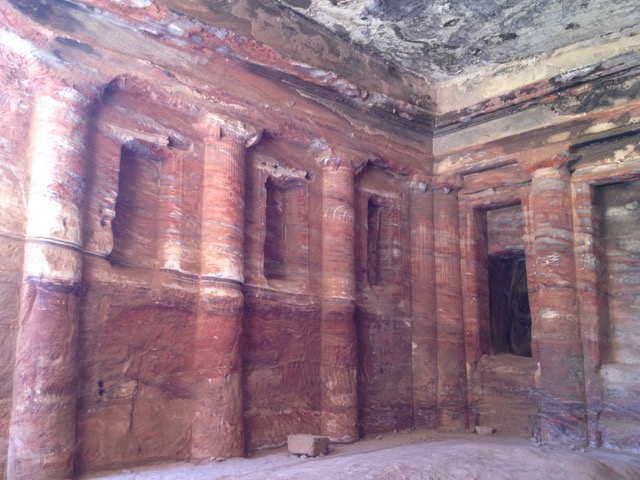
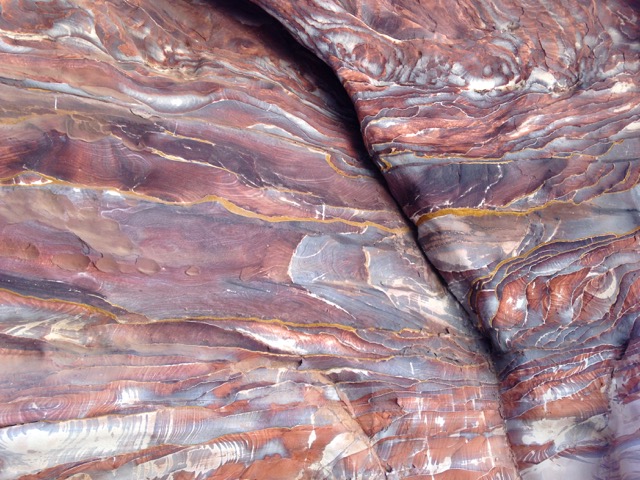
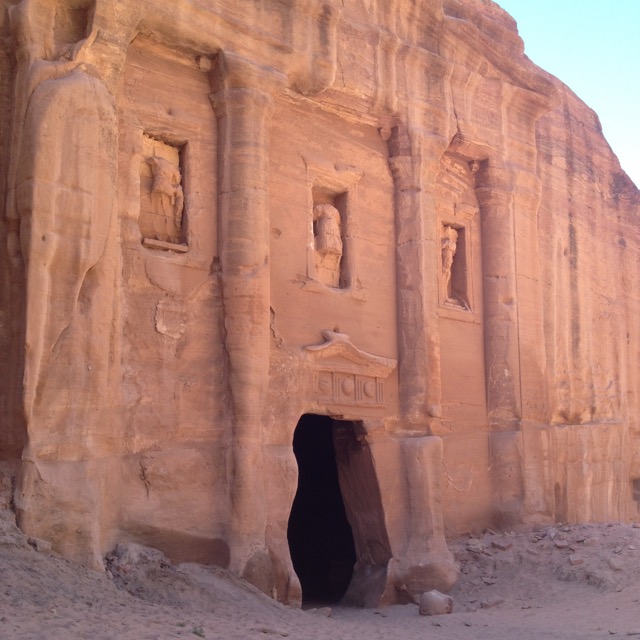
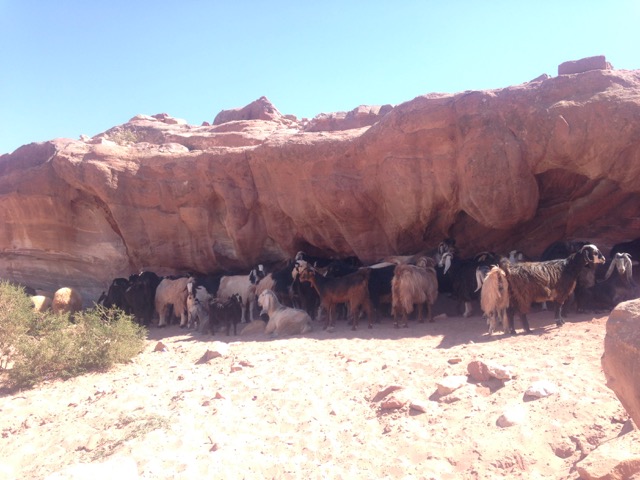
Our path eventually led us around to the Qasr al-Bint temple complex, notable because it is thought to be the oldest temple at Petra and it is one of the few structures there built (rather than carved) from rock.
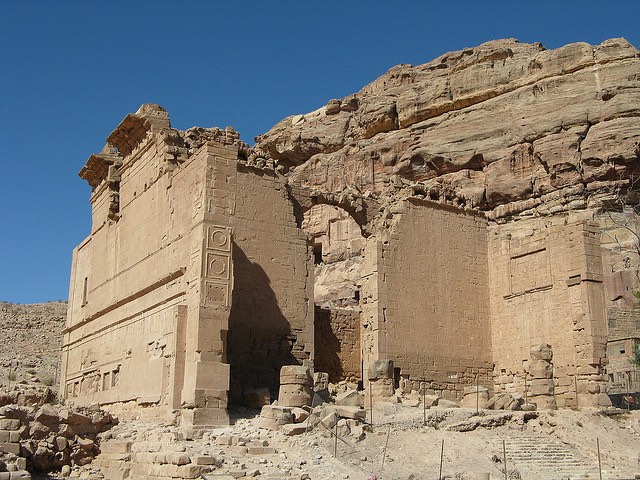
From there, we hiked the 800 steps up to the Monastery. Just as the Treasury is not actually a treasury, the Monastery is not actually a monastery. Instead, it is likely a temple that was given the nickname of the “Monastery” because of its remote location and perhaps because of some crosses on its interior.
Along the way, we stepped off the path to check out the Lion Triclinium.
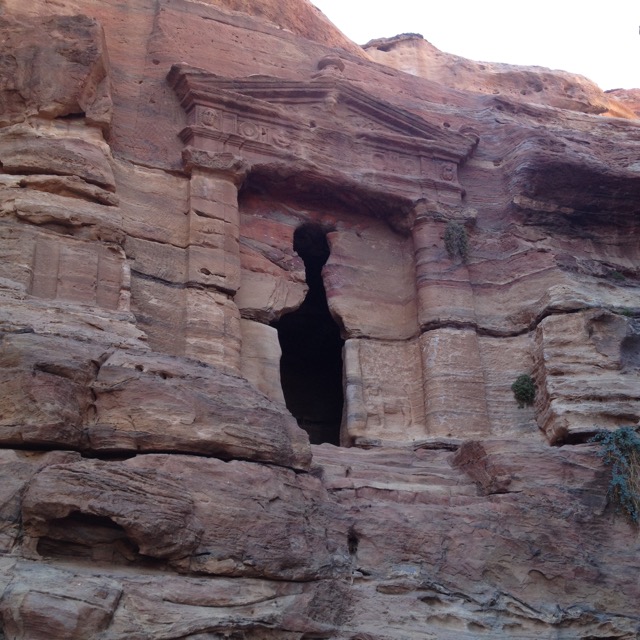
The Monastery was awe-inspiring. It looks like the Treasury, although on a grander scale and with less ornate detailing. After our long hike to reach it, we were content to sit and gaze at its beauty.
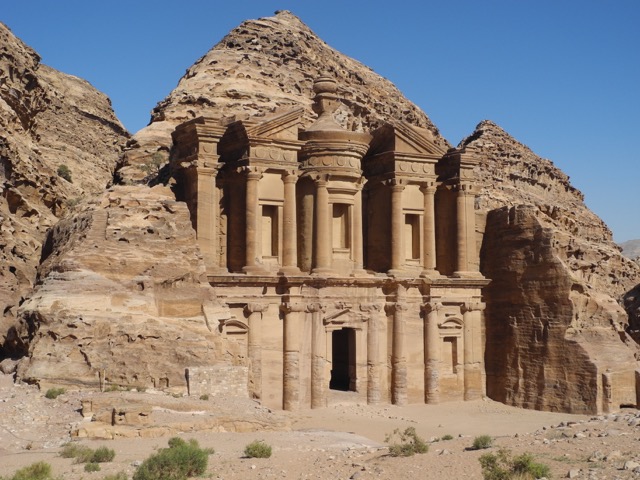
After walking around and enjoying the view a bit more, we descended and headed for the remaining major sites.
First, we saw the Great Temple, the largest freestanding building uncovered thus far at Petra.
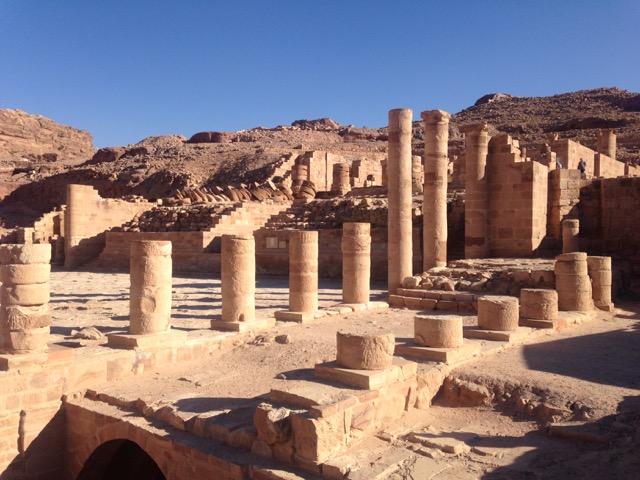
Next, we headed to the Byzantine Church, which we found locked despite it being opening hours. Undeterred, we climbed onto the surrounding walls and looked down to take pictures of the amazing mosaic floors.
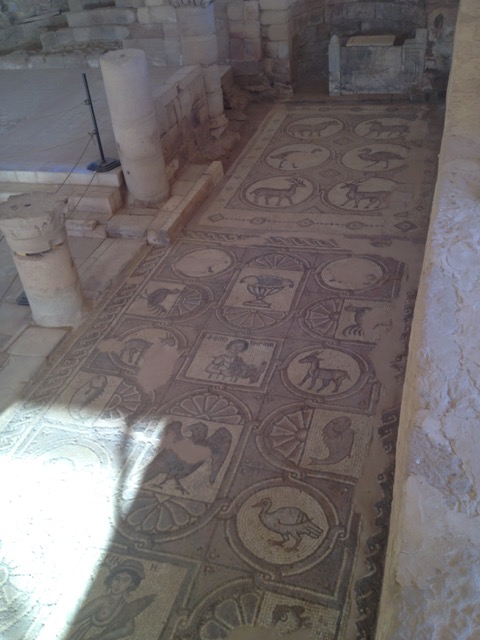
Finally, we visited the Royal Tombs, some of the grandest tombs at Petra.
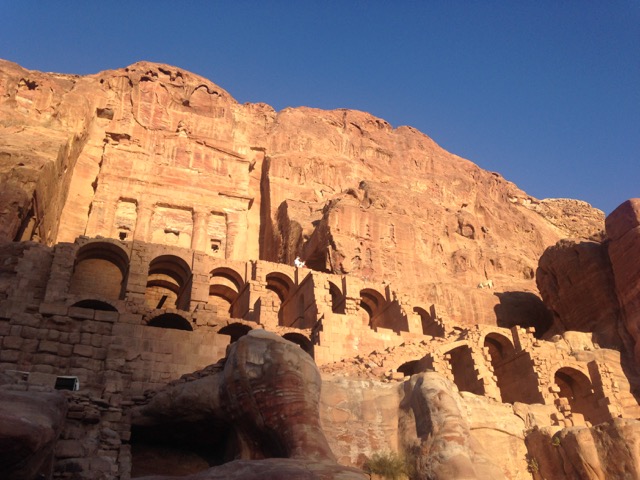
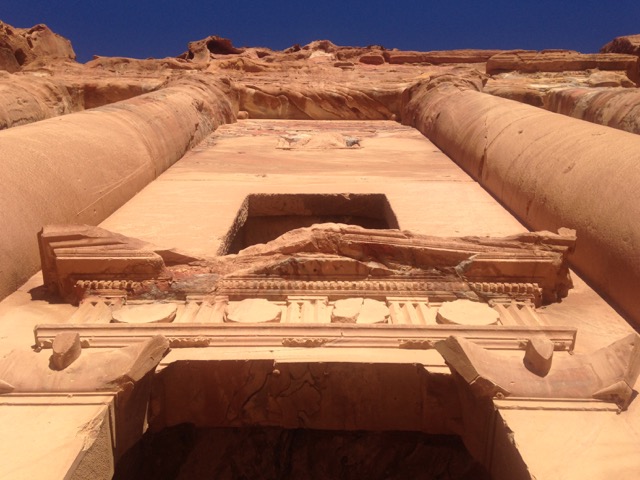
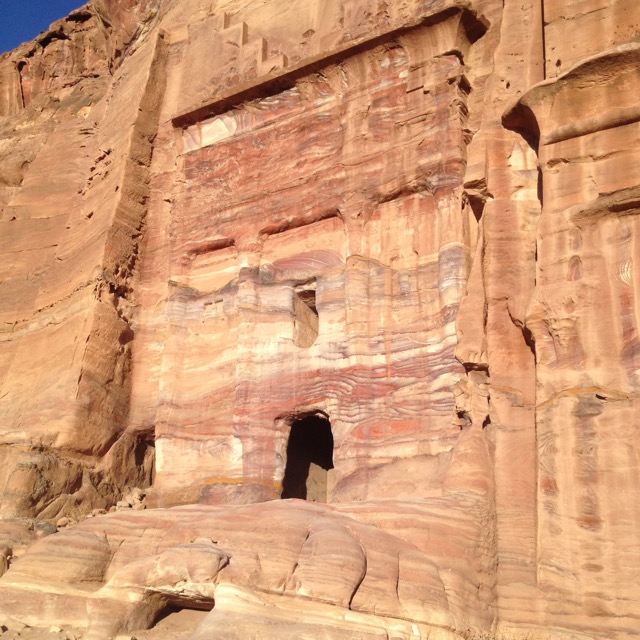
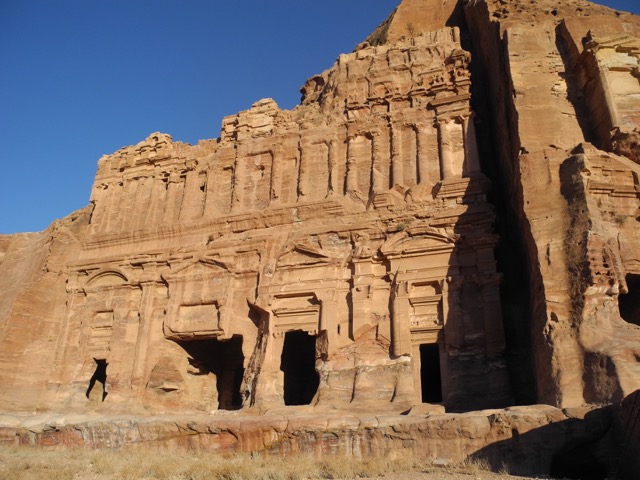
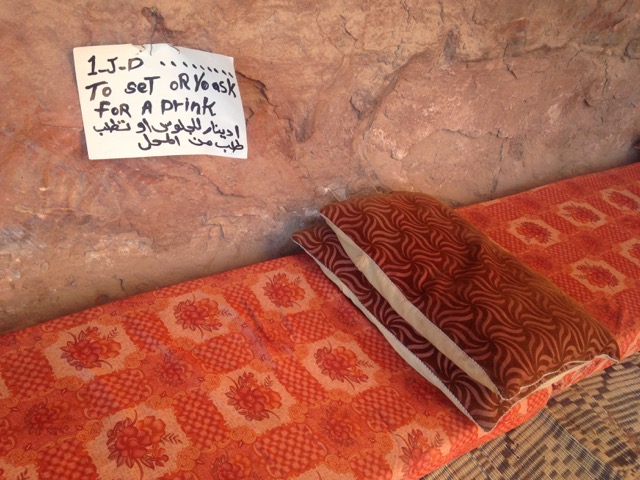
Petra was, unsurprisingly, amazing. Aside from its almost eerie beauty, one of the things that interests me most about Petra is that still so much remains unknown – and that new discoveries are still being made. Astonishingly, the Great Temple was not found until 1992 – nearly two centuries after Petra had been “discovered” by Swiss explorer Johann Ludwig Burckhardt – and continues to be excavated to this day. No one knows how many other incredible things might still be out there, just waiting to be uncovered.
Where We Stayed:
☆ Candles Hotel. Three goats. This is a perfectly serviceable accommodation in probably the best location in all of Wadi Musa – literally within walking distance to Petra. It is also home to the most unintentionally hilarious hotel information sheet ever:

Where We Ate:
☆ Seven Wonders Pizza. I am usually not someone that writes negative reviews, but I disliked this place *so much* that I went to the trouble to write a bad review on TripAdvisor. It was so not good and so overpriced. Avoid!
☆ Red Cave Restaurant. Yummy food (our meal included hummus, baba ghanouj, pita, and some sort of “upside down” chicken and rice) and friendly service.
☆ Three Steps Restaurant. Another solid choice. They have some sort of prix fixe menu for two, but we ordered mutabal (an eggplant dip), muhammara (a dip made of walnuts and red peppers, sometimes including pomegranate – as it did in this iteration), and some sort of chicken and vegetable dish.
☆ Admirable mention for the shop around the corner from our hotel: We picked up picnic supplies here for both of our jaunts into Petra, and the friendly guys behind the counter tossed in some delicious nougaty candy for free when they saw us eyeing it.
1 The lighting was terrible every time that we walked past the Obelisk Temple, so we never got any pictures of it. I couldn’t find any images available in the Creative Commons, but you can click here to see a picture of it on Flickr.
2 It is in these tight parts of the Siq that you need to be especially cautious of the horse-drawn carriages. They will not stop for you – one of them clipped Marc as it raced by!
3 A triclinium is a formal dining room in a Roman building, and I remember reading that it is thought that these buildings were places where feasts could be held to honor the dead.

